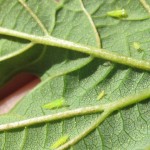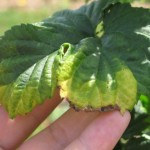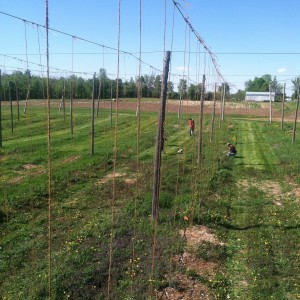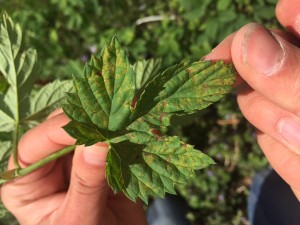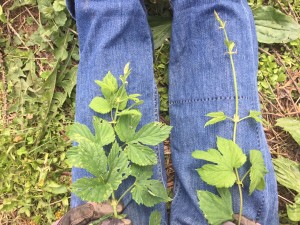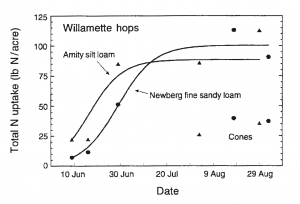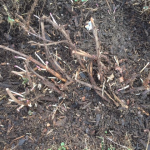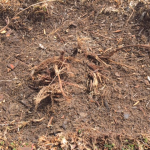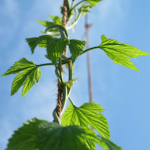Greetings!
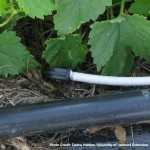
At this time, our hops in Alburgh are growing quite quickly, up to 15-25 cm a day! During this period of vegetative growth up the strings, it is important to keep up good management practices. Ours include fertilizing, irrigating, weeding, spraying bio-fungicides, and scouting for insects and downy mildew. Our hops are currently being fertilized through the irrigation system–a process known as fertigation. Continuing these tasks is important to ensure that the hops are ready for the switch to their reproductive growth stage, which will begin around June 21st in response to the shortening hours of daylight. Until then, keeping up management practices with the growth of the hops will be keeping us busy.
Happy growing!

